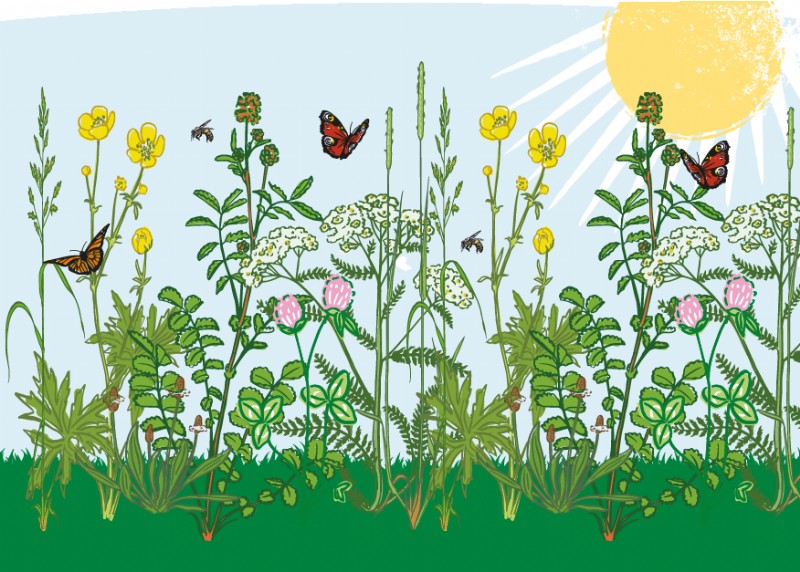

When to sow a wild flower meadow
Wild flowers should be sown in spring (late March - May) or late summer (August-September). Spring time is good as this gives the seeds the chance to establish throughout the rest of the year. Sowing in autumn, when grass growth is slowing, means the flowers have a chance to come through.
Sowing rate
2.5 grams per square metre or 10 kg per acre maximum. Putting on more than this will mean the stronger species (grasses) will start to dominate.
Mixes are created with specific sites in mind and choosing the right mix is really important. If the area you wish to sow is chalk or limestone, acid or clay, damp or shady, then choose a mix created for those particular circumstances, otherwise a general purpose one is best.
Establishing a wildflower meadow
It is important to control any weeds in the area to be sown before the seeds are broadcast. Problem weeds are docks, thistles and nettles as these cannot be removed easily once the meadow area is sown. Weed control can be done one of two ways:
- Herbicide spray
- Stale seedbed technique - prepare the seedbed as usual then wait a few weeks for weeds to germinate, then cultivate again to destroy and bury the weeds. Then sow your seed.
Once weeds have been dealt with, prepare a fine, well-worked seedbed and give it a roll. Then broadcast the seeds by hand or using a spinner. Once this is done, harrow or rake the area, then roll it again to ensure the seeds are in good contact with the soil.
Overseeding
If an existing meadow starts to look thin, then it is possible to overseed with just wild flower seeds, although to do this successfully the area must be harrowed before hand to ensure the seeds reach the soil.
Managing a wild flower meadow
If left alone, a wild flower meadow will quickly return to scrub with the more competitive species taking over. Any wild flower meadow should be mown during its first season to control annual weeds. In the second year, let it flower before mowing. This will vary year to year, but is normally around August.
After mowing, removing the cuttings. This helps decrease the fertility of the soil so favouring delicate wild flowers. If you have very poor growth on thin soil, then cuttings can be left.
Preventing grasses from smothering the flowers
When choosing your mix, opt for fine, non-aggressive grasses. Exclude the more competitive grasses such as ryegrasses, cocksfoot and agricultural forms of timothy. Heavy, clay-rich or fertile soils will encourage grass growth, so meadows are most successful on lighter, drier, free-draining soils.
Coping with weeds
Any perennial weeds should be cut out or spot treated. Annual weed varieties will disappear after the first season.
Persistence
Wild flower meadows, once successfully established, should be permanent, and will improve with age.
Fertile soils
Wild flowers prefer infertile soils, so do not thrive in areas of high fertility. Some enthusiasts remove fertile topspoil exposing less fertile subsoil.
Species domination
If established correctly on the right type of soil, the balance of species should be harmonious. Any imbalance normally means the soil is too heavy, too wet or too fertile, so favouring grasses.
Sowing wildflowers into a lawned area
This can be done by broadcasting seed in early spring and then raising the mowing height or stopping to mow altogether. We supply a wild flower only mixture for this purpose. However, the strength of the grasses in the lawn mix will determine the success of the wild flowers, as will the site's soil conditions and fertility.
Date Posted: 29th March 2017




